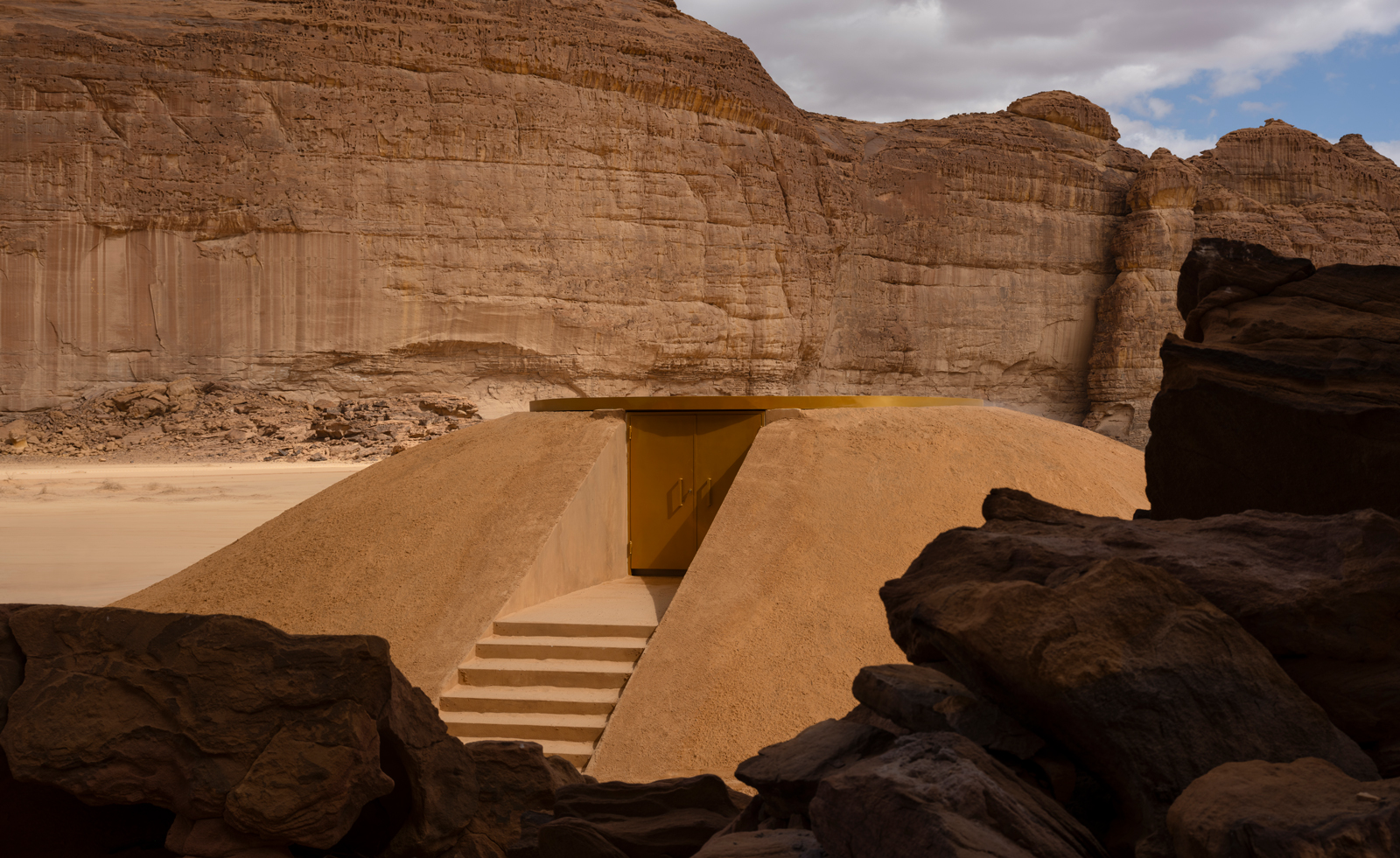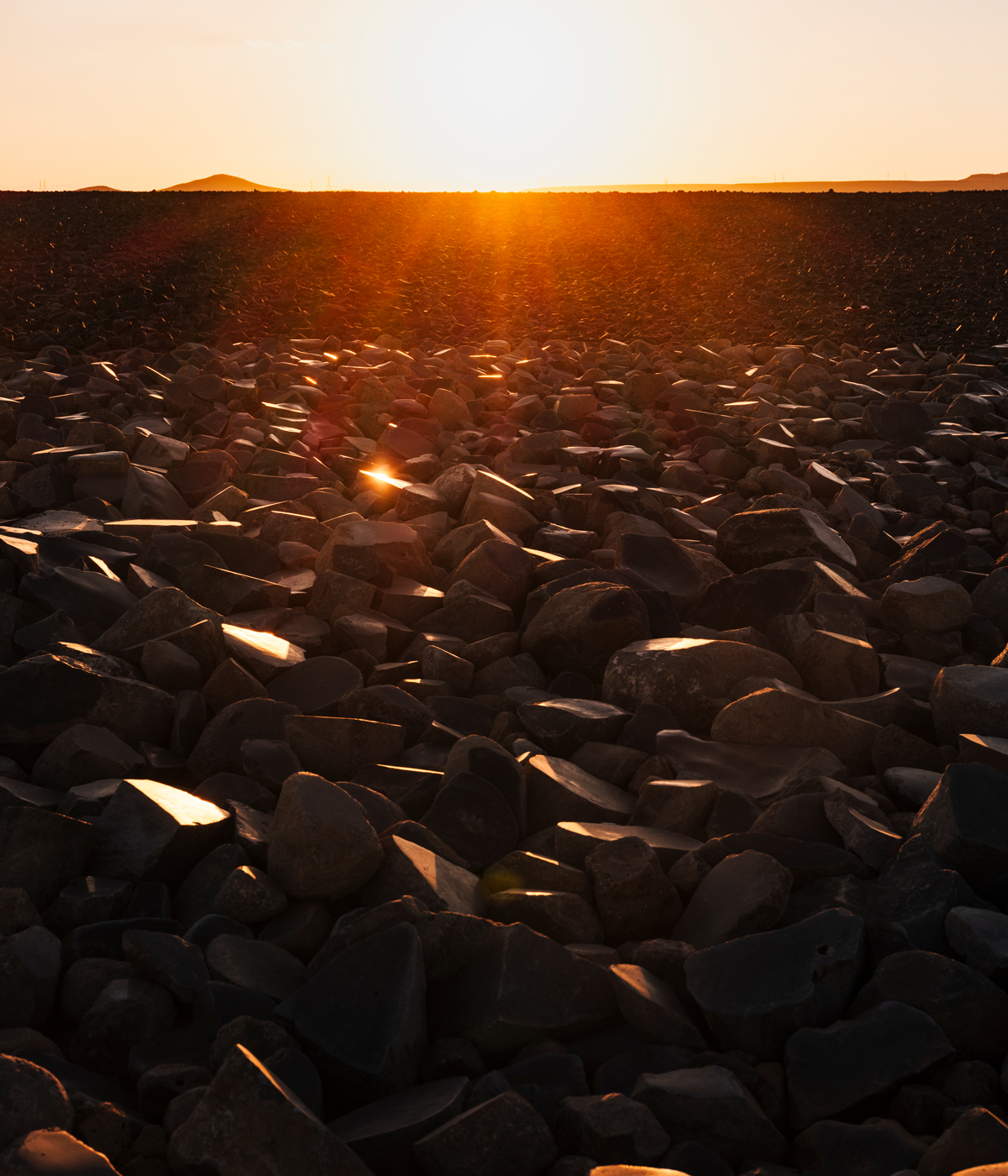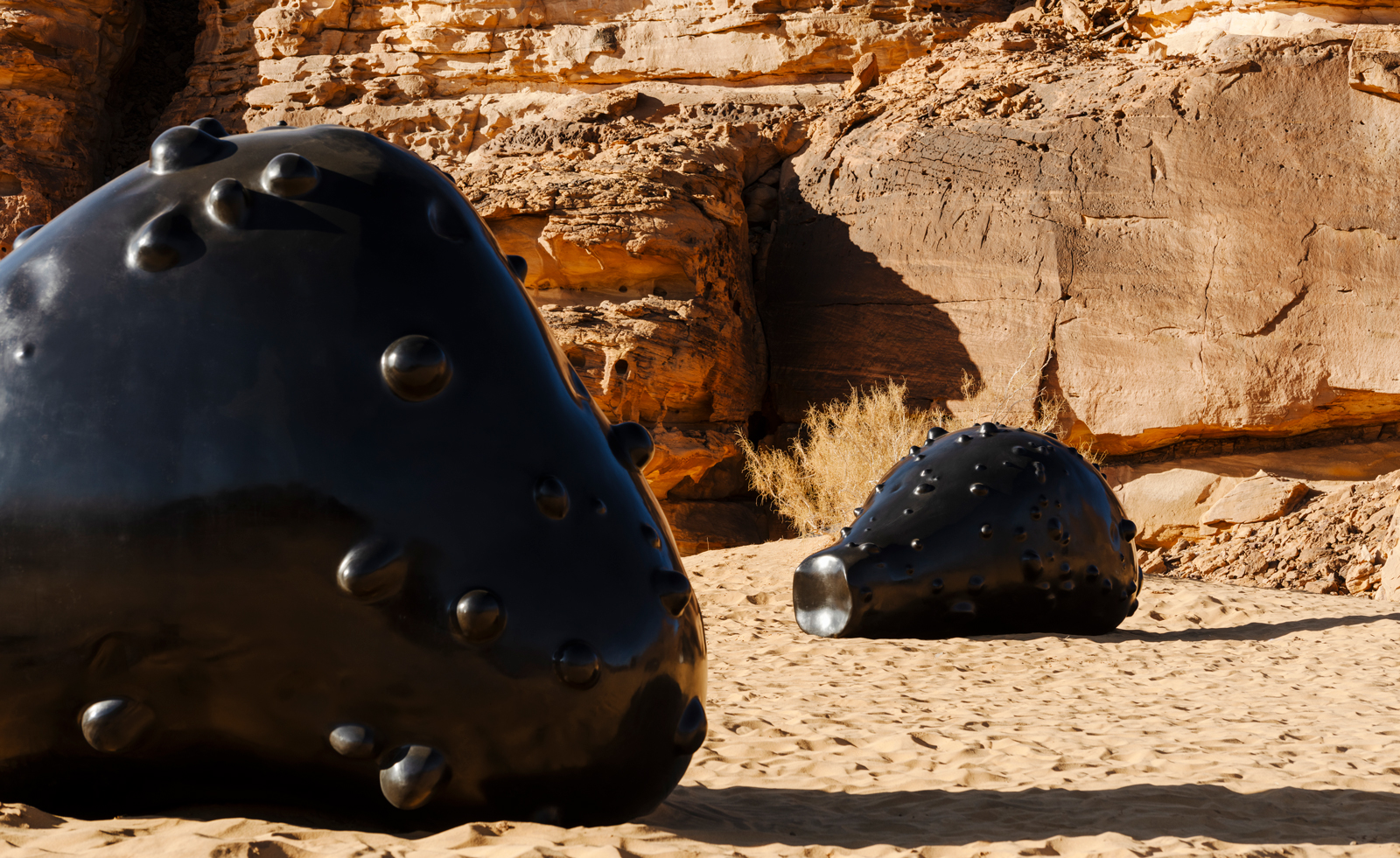Desert X AlUla 2024 sees artists explore illusion and mirage
Desert X AlUla 2024 dazzles in its role as a prototype for Saudi Arabia’s permanent land art park, with site-specific installations by native and international artists

The theme for Desert X AlUla 2024 – on until 23 March, the latest land art exhibition from the California-founded Desert X organisation – is making the invisible visible, with the title ‘In the Presence of Absence’. The desert being a place of winds and mirages, dust-clouded perception and desire’s imaginative projections, the 18 commissioned artists – including Giuseppe Pennone, Kimsooja and Ayman Yossri Daydban – played with notions of illusion. All were awed by the landscape and had moments of doubt in their capacity to contribute something worthy. AlUla’s desertscapes are so dramatic that the context is not a backdrop but dominates the senses, rendering everything manmade insignificant. The better human efforts are humble gestures and endearing attempts. Festival co-curator Marcello Dantas (alongside Maya El Khalil) says: 'The works here need the landscape for their power. It doesn’t get more site-specific.'
Desert X AlUla 2024
Desert X AlUla’s most successful installations are tonal with the environment, while those in bright colours and synthetic materials generate a visceral sense of inflicting a petty violence against their ancient host. In fact, producing some of the natural-looking installations involved more disruption than installing the louder works, and in practice no matter how much the curatorial and artist statements reflect a genuine desire to work sensitively, the majority of interactions by the festival and its visitors with this desert inevitably alter its previously comparatively pristine ecosystem. Desert X (last seen in the Coachella Valley in 2023) follows the ‘Leave no trace’ mantra of California’s more experimental desert arts festival Burning Man, but just like at Burning Man, it can be hard to forget about things like emissions while appreciating the expressive extravaganza.

Karola Braga, Sfumato
Among this year’s commissions, two beautiful architectural structures work with desert dust in ways that are naturally and culturally harmonious while having a palpable effect on the body. Saudi architects Sara Alissa and Nojoud Alsudairi worked with natural builder Earth Man to build down into the desert floor for Invisible Possibilities: When the Earth Began to Look at Itself, using the age-old rammed-earth technique found across all cultures. Dust was repacked only with corn starch and water to give it enough strength to hold its stepped cut through the ground, inviting guests to know how it is to be within the body of the desert itself.
Nearby, Brazilian olfactory artist Karola Braga built upwards to create her giant incense burner Sfumato. Fragrance, particularly oud, is central to AlUla, an oasis stop on the perfume trade route that lasted from prehistory to the 1980s. Passing by clouds of this aroma on the sand feels completely in keeping. Both projects create the sensation of being welcomed in an otherwise alienating environment.
Two more installations stood out for their minimalist poetry that evoked deep feeling while leaving the lightest footprint, both using ancient methods of refining natural materials to play with sunlight as it shifts from morning to night. For her work The Desert Has No Surface, Lebanese Caline Aoun took some of the black volcanic fragments covering AlUla’s high plateau site at Harrat Uwayrid and polished them in the traditional way, sanding one side using only water. She then placed them back on the ground in a flat circle, and as the sun moves through the sky it reflects off their newly flat faces in nuanced yellows, whites and oranges, in conversation with solar circularity, and at night with lunar glimmers.
Mexican Bosco Sodi’s When I Saw My Reflection similarly uses small rocks and light in a simple way to great effect, but with the addition of gold, first mined in Arabia in 3000 BC. Locally gilding round desert stones, he’s placed them in nooks within two opposing cliffs across the main site’s sweeping sand valley. The golden pebbles wink at each other and passing guests, illuminated variously at different times, only lit simultaneously for two hours before sunset.

Bosco Sodi, When I Saw My Reflection
The work of Ghanaian Ibrahim Mahama, currently having a moment in the art world, was much talked of throughout the VIP opening, as he’s exhibiting a three-part installation across different sites, using ceramic urns in various arrangements to symbolise the before, during and after periods of colonial rule.
Receive our daily digest of inspiration, escapism and design stories from around the world direct to your inbox.
Lebanese collaborators Rana Haddad and Pascal Hachem also play with the ceramic urn as a foundational object of civilisation, constructing cylindrical towers whose filigree echoes the surrounding rocks’ erosion patterns, with windows and doorways of unusual proportions and positions rearranging perspective.
Kuwaiti Monira Al Qadiri’s family of bulbous black W.A.B.A.R. sculptures manage to stand out yet fit in, their alien bodies in contrast to the dune on which they sit, somehow not out of place, perhaps because they look like drops of oil. They’re scaled-up versions of real mini meteorite fragments found in the desert that people imagined were charred pearls from a burned city. ‘I wanted to use a permanent material like bronze so maybe people would find them buried in the future and be like, “What is this?”’ she explains. It’s a work about the power of the human imagination, but also about how reality can surpass our wildest fantasies, in that even more exotic than the idea of burned pearls, the tiny black rocks had actually fallen from outer space. ‘I like to seize any opportunity to make public art in the Gulf as we’ve had a long-term problem with that,’ says Al Qadiri, sharing a view held by many in the region’s artistic community. ‘Saudi is exciting now as it’s on the precipice of real change,’ she adds. ‘I don’t know what’s going to happen but I wanted to create something that will outlast any policy changes.’

Caline Aoun, The Desert Has No Surface
While Saudi pursues its arts masterplan with the kind of gusto only made possible by its rocket-fuel cocktail of enthusiasm, ambition and eye-wateringly deep funds, this largest economy in the Middle East has the benefit of learning from the trials of its smaller, faster Gulf neighbours. By following the regional mode of drawing on Euro-American experience in the business of culture but applying it to the nation’s specific characteristics of outstanding natural beauty and underemphasised ancient heritage, it has an opportunity to be guided by today’s concerns around sustainable development. The Prince of AlUla is the Saudi Minister of Culture and placemaking AlUla is a keystone in national arts strategy.
Psychologically uplifting and physically challenging, Desert X AlUla 2024 does what being in the desert does best: re-instils appropriate reverence for nature’s grandeur. The timeless human urge to make a mark in such a context while also wanting to honour the environment is land art’s core conundrum, played out in all its micro-drama through every festival artwork.
The most moving of all the commissions is an untitled performance choreographed by British-born artist of German-Indian descent Tino Sehgal. Connecting powerfully with the live experience of the visitor, three performers move animalistically across a slope of fractured shards, harmonising haunting ‘Om’ vocals as they unfurl and approach you. They are strange yet they are you, and vulnerable to the elements; the phenomenology of being human is felt intensely. To preserve its ephemerality, the artist requests his work not be recorded, so witnessing its magic requires making the pilgrimage.
Desert X AlUla 2024, 9 February – 23 March 2024

Monira Al Qadiri, W.A.B.A.R.
Kasia Maciejowska is a writer and editor covering arts and culture. Her first book The House of Beauty and Culture (ICA, 2016) was about a radical London crafts collective, and she’s currently working on a monograph about Moroccan-French photographer Leila Alaoui (Skira, 2026). Consultancy clients include museums, galleries, design studios, and futures agencies. She also runs a creative career mentoring network for young refugee women
-
 A tale of two Audis: the A5 saloon goes up against the A6 Avant e-tron
A tale of two Audis: the A5 saloon goes up against the A6 Avant e-tronIs the sun setting on Audi’s ICE era, or does the company’s e-tron technology still need to improve?
-
 Inside Christian de Portzamparc’s showstopping House of Dior Beijing: ‘sculptural, structural, alive’
Inside Christian de Portzamparc’s showstopping House of Dior Beijing: ‘sculptural, structural, alive’Daven Wu travels to Beijing to discover Dior’s dramatic new store, a vast temple to fashion that translates haute couture into architectural form
-
 A music player for the mindful, Sleevenote shuns streaming in favour of focused listening
A music player for the mindful, Sleevenote shuns streaming in favour of focused listeningDevised by musician Tom Vek, Sleevenote is a new music player that places artist intent and the lost art of record collecting at the forefront of the experience